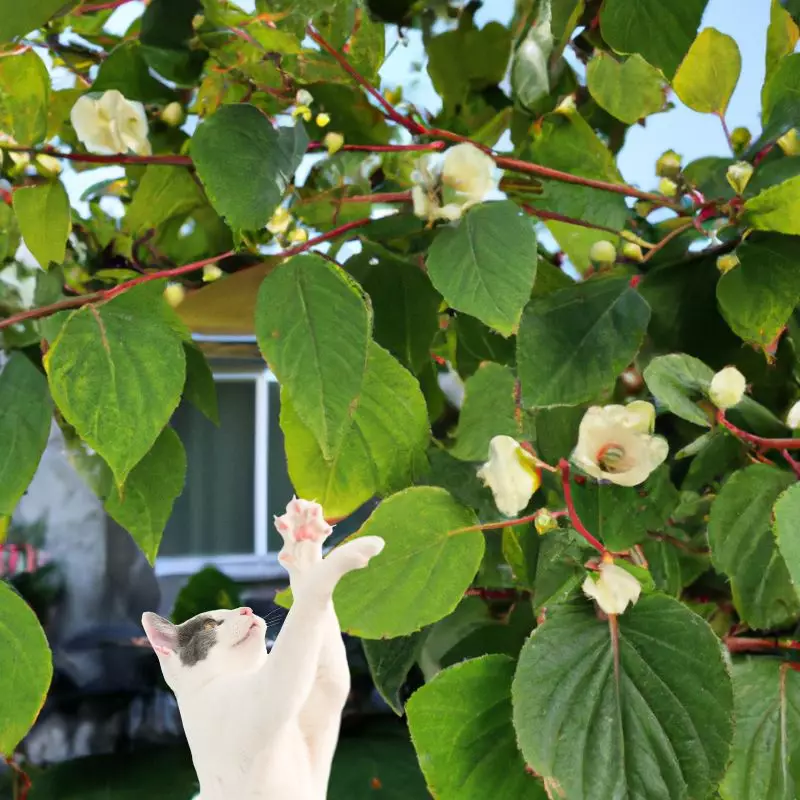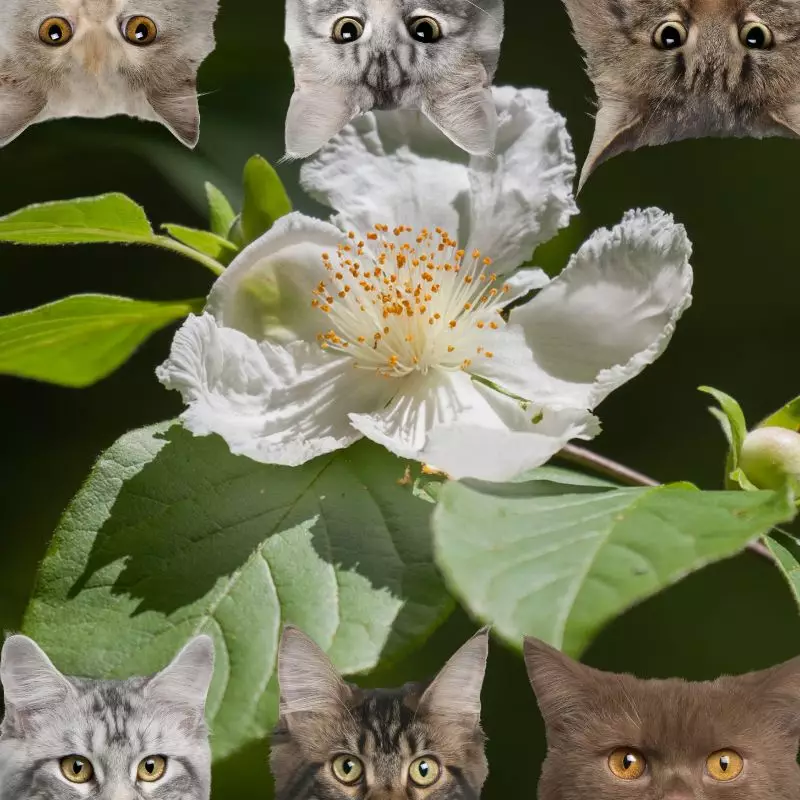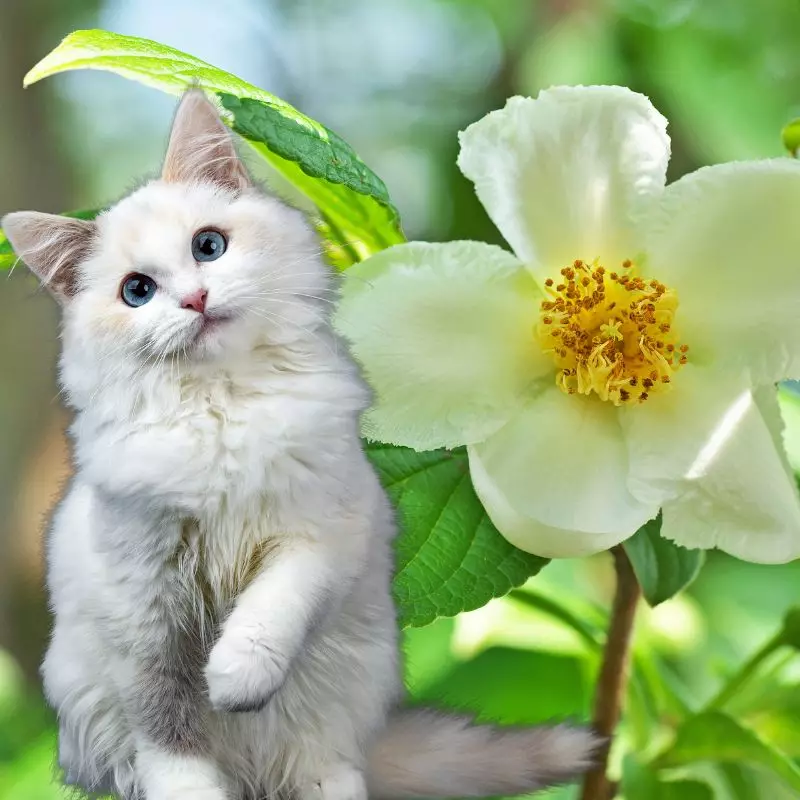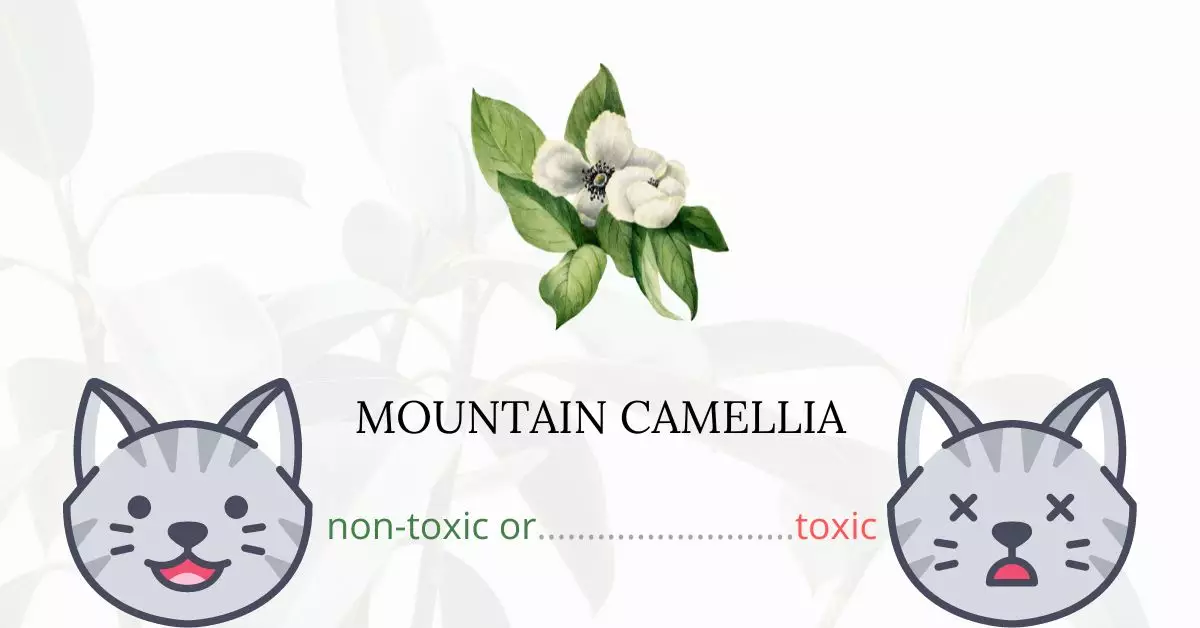No, the mountain camellia is not toxic for cats.
This article is the result of a collaboration with a team of experienced DVMs (doctors of veterinary medicine). Their expertise, combined with rigorous research from high-authority websites such as the ASPCA and PetMD, ensures the accuracy and relevancy of the information provided here concerning the potential risks of various plants, with a focus on Mountain Camellia in this instance.
It’s worth noting that the mountain camellia is included on the ASPCA’s (American Society for the Prevention of Cruelty to Animals) list of non-toxic plants for cats, dogs, and horses. While it’s safe for cats to touch, bite, or lick the mountain camellia, the implications of ingesting this plant are a separate matter that deserves further discussion.
Can Cats Eat Mountain Camellia?

If your cat ate a small bit of a mountain camellia, it’s not a massive worry. You should be concerned if your cat swallows an excessive amount of mountain camellia. A cat who eats too much of this shrub may suffer gastrointestinal issues or indigestion.
Since cats are obligate carnivorous animals, their bodies are not ready to digest certain materials like plants. As a result, they experience vomiting and diarrhea if they eat a lot of plants.
Another factor that can affect your cat’s welfare is the plant care products that you use on your plants. Some commercial plant products contain poisonous chemicals and leave residues on plants. If your cat has eaten a portion of the plant with toxic residue, he or she may suffer from poisoning.
What is Mountain Camellia?

The mountain camellia is a big decorative deciduous shrub or small tree native to North Carolina’s piedmont and mountains. The plant may grow to be 10 to 15 feet tall and 10 to 15 feet broad, with a rounded to oval form.
Depending on the cultivar, the spectacular white-cupped to saucer-shaped blooms blossom during the summer and have varying colored stamens. The orange to crimson fall leaves lends a splash of color to the environment. The plant is linked to the Camellia and belongs to the Theaceae family.
Mountain camellia is also known as mountain Stewartia and summer dogwood. It is indigenous to the southern United States and may be found in nature in shaded ravines, mesic woodlands, especially acidic cliffs, and commonly in rhododendron thicket openings.
Keeping Cats Away From Mountain Camellia

Cats like soft, loose earth to tread on and avoid spiky areas. Make your garden beds appear less enticing or less similar to a litter box.
Plant pine cones or other thorny yard trimmings (such as autumn leaves) in the soil around your plants. Other choices include stone mulch, eggshells, holly trimmings, and reused plastic carpet runners with the nub side up.
Cats loathe the aromas of rue, lavender, and pennyroyal, as well as Coleus canina and lemon thyme. Plant a handful of them in your garden.
Scattering brewed coffee grinds on the ground may also be beneficial. You can ask local coffee shops near you if you can get some for free.
Plants to Avoid For Your Cats
If you are a cat owner and unsure if the plants growing in your yard are harmful to your cats, check out this list of toxic plants for cats. You can also check our list of non-toxic plants for cats.





